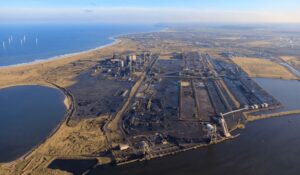Green, grey and blue hydrogen: What’s the difference?

Ever wondered what all the buzz around hydrogen is about? You’ve probably heard terms like green, blue and grey hydrogen thrown around, but what do they actually mean?
Driving Hydrogen Editor Matt Lister breaks it down and explains all of the different flavours.
What is grey hydrogen?
Grey hydrogen is the old-timer, the legacy colour of the hydrogen family. It’s the most common form of hydrogen production today, created through a process called Steam Methane Reforming (SMR).
Sounds fancy, but while it produces a lot of affordable hydrogen, it also pumps out a fair amount of CO₂ – with some estimates at 9-12 tons of it for every ton of hydrogen produced.
Economically, grey hydrogen has been a winner so far – cheap to produce thanks to the abundance of natural gas, with a world filled with well-established infrastructure.
But with society cracking down on carbon emissions, grey hydrogen is quickly becoming a cassette tape in the age of Spotify.
What is blue hydrogen?
Now, blue hydrogen – this is the middle child trying to please everyone.
Like grey hydrogen, it starts with SMR, but blue hydrogen captures most of that pesky CO₂ and stores it underground or repurposes it for industrial uses.
It’s a bit like grey hydrogen, but with a DPF filter and a catalytic converter.
Blue hydrogen cuts CO₂ emissions by 50% to 90%, depending on who you ask, and how efficient the capture and storage processes are. However, some CO₂ can escape, and the energy used in capturing and storing CO₂ can reduce overall efficiency.
Blue hydrogen is more expensive than grey hydrogen, mainly because of the added costs of carbon capture and storage.
But as carbon taxes rise and environmental regulations tighten, blue hydrogen could become the more economical option. Really, it’s a stepping stone to a cleaner future while we build up the renewable energy infrastructure needed for the ultimate goal: green hydrogen.
What is green hydrogen?
Finally, we get to green hydrogen – the golden child, and environmentalists’ wet dream type of hydrogen.
This is produced through electrolysis – a fancy word for electrocuting water and splitting it into hydrogen and oxygen.
Green hydrogen is as clean as it gets.
The magic happens when this electricity comes from renewable sources like wind, solar, or hydro. The result being that green hydrogen has zero carbon emissions – just pure, clean energy, with oxygen as the only byproduct.
There is a slight catch though: green hydrogen is currently the most expensive type to produce.
The high cost comes from the price of renewable electricity and the relatively low efficiency of current electrolysis technology.
But don’t count it out just yet – costs are expected to drop as renewable energy becomes cheaper and electrolysis technology improves.
In the long run, green hydrogen will be the backbone of a fully-decarbonised energy system, making it the fuel of the future.
Why does it matter?
Why should we care about these different types of hydrogen?
Well, as we move towards a more sustainable future, hydrogen will play a key role in decarbonising industries that are hard to electrify, like most of automotive, steelmaking, heavy transport, and aviation.
Grey hydrogen is holding us back, blue hydrogen offers a solid compromise, and green hydrogen is where we need to be if we’re serious about tackling climate change.











